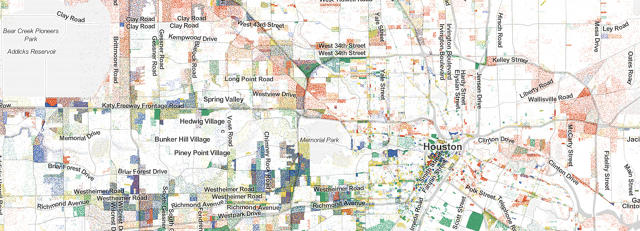This extremely unique Map displays each Single Job In the us
where are all the jobs going? This map will show you.
July 21, 2015
someplace in the sea of colored dots on this map is a single dot representing your job. Or, at the least, your job in 2010, the 12 months of essentially the most contemporary census information. Zoom back, and one can find the patterns of jobs throughout your nearby and the u . s . a . as a complete.
inspired with the aid of a similarly exact map of race in the us, the map plots out every job in 4 simplified classes. manufacturing unit and trade jobs are red, professional jobs are blue, health care, training, and government jobs are inexperienced, and service jobs like retail are yellow.
“Dot maps like this one and the racial dot map are in particular useful for visualizing density, especially of people,” says Robert Manduca, the Harvard PhD student who created the map. “there’s a definite simplicity to them—one dot equals one job or one particular person—that makes them highly effective and slightly simple to interpret.”

throughout the usa, there are clear differences through city. Las Vegas, in keeping with its tourism business, has a sea of yellow dots. whereas San Francisco has few manufacturing facility jobs, local San Jose has blocks of purple. Detroit and Cleveland still have swaths of purple as well, although it’s also apparent how few jobs are left. In New York city, long island is solidly blue and green, unlike the opposite boroughs.
whereas jobs in Houston sprawl into the suburbs, Manduca points out that jobs in most cities are enormously focused. “people now and again discuss in regards to the suburbanization of jobs,” he says. “you will find a few of that on the maps, however downtown place of work districts nonetheless have heavy concentrations of jobs in most cities. And even the place employment has moved to the suburbs, it appears to have clustered in certain districts or alongside certain transportation corridors.”
despite the complexity, the map used to be slightly simple to make, due to evolving mapping instruments and the fact that the creator of the Racial Dot Map shared his code on-line. “Even five or ten years in the past a venture like this is able to have required me to write way more authentic code,” Manduca says. “Now it can be more a subject of selecting the suitable packages and tools to use and stringing all of them collectively. that suggests that you would be able to go from a dataset and an concept to a finished visualization in a topic of days.”
[Cover Photo: Jetta Productions/Getty Images]
quick company , read Full Story
(81)














